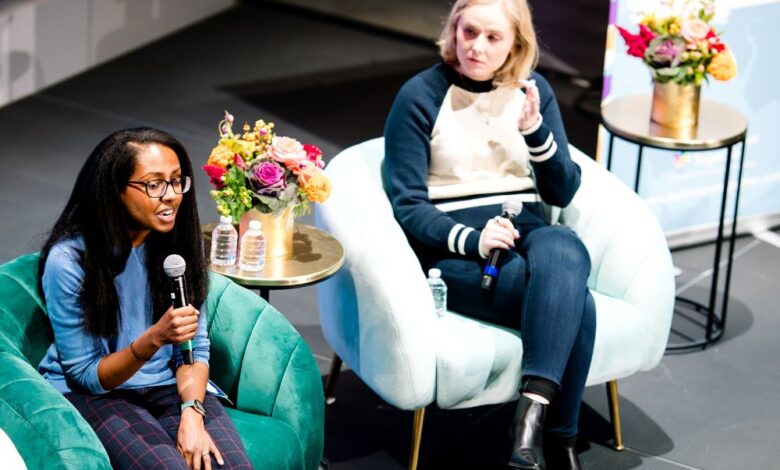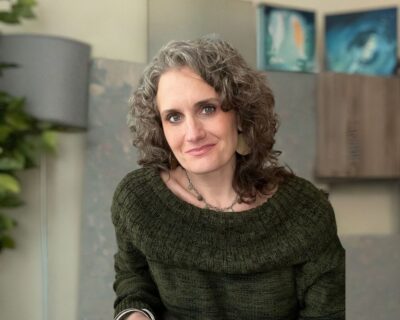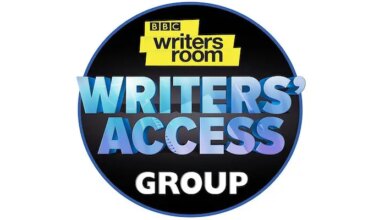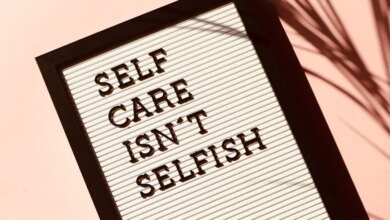How entrepreneurship can look when you’re disabled: ‘There is absolutely nothing wrong with having to do things a bit differently’

“So we’re going to hear from some of Baltimore’s most innovative leaders. This panel is to showcase the growth and future of Baltimore’s innovation economy [in] tech, life sciences and the creative industries.”
That was the introduction that Dionne Joyner-Weems gave for my panel at the 2023 Baltimore Together Summit. There, Baltimore-area founders like Rebecca Rosenberg, CEO of the 2023 RealLIST Startup ReBokeh Vision Technologies, and Sam Scott, CEO of JuneBrain, took the stage at the newly opened M&T Bank Exchange to discuss their respective innovations.
On the panel, Scott, a mother, highlighted positive aspects of her founder journey like collaborations with universities. However, she also acknowledged the challenges she faces as a Black woman with a neuromuscular disorder. She shared experiences from investor meetings where people discouraged her from revealing her disability, concerned that being disabled might be seen as too high-risk.
Backstage before the panel, Rosenberg shared similar challenges with investors and mentioned a British study with some “sobering” statistics: For instance, disabled founders are 400 times less likely to receive VC funding. This underscored both her and Scott’s challenges with funding and other aspects of being self-described disabled founders in the US.
The conversation precipitated a follow-up virtual roundtable discussion with both founders that touched on challenges they might face in securing VC funding, as well as the broader issues of representation and awareness for entrepreneurs with disabilities. Here are some of their reflections. This interview has been edited for length and clarity.
What insights have you both gained about yourselves and your industry throughout your founders’ journey, especially with a lens of being a disabled founder and identifying with the population of folks that you serve?
Sam Scott: I have learned what my limitations are and how those translate into me being very innovative in other ways. So just on a daily basis, if you have a disability, you have to be innovative every day in order to get through the world in a way that’s best for you — because how things are typically done when it comes to running startups doesn’t always work if you have a certain disability.
So for me, I have very limited energy. And when I say that, [it] doesn’t mean I need to go take a nap: It means I’ll wind up in the ICU if I don’t take care of myself. So I learned very early on that I’m really great at putting together collaborative teams. … But I really need to lean on other people to fill in gaps that I have and just do things in a very efficient way by just [going] about fundraising and networking in a different way.”
Rebecca Rosenberg: First of all, I just want to say: Sam, I have never heard somebody explain it that way. … I mean, [if I don’t rest] something very serious will occur to me. I really appreciate that as [as someone with a disability] because I think that’s something so many don’t quite understand in that. In terms of what I think I’ve learned about myself, very similar. I think I have really — and I knew this growing up — but I have seen, especially over the past four years as I’ve been an entrepreneur, just how many things you are forced to learn as a child with a disability that most people don’t learn until they are well into adulthood. You know, learning to ask for help. It’s like I simply will get hurt if I try to walk down a flight of stairs and I can’t see them.
And so I had to learn from a very young age how to ask for help. And just a certain amount of resilience in the face of things being challenging and that innovativeness that Sam talked about. Also just, like, solving these problems that nobody else can really solve for me because they don’t quite understand them.
Are you concerned about the inequalities highlighted in the report, such as disabled entrepreneurs having only 0.1 share of voice in the public sphere? This was initially discussed in the UK, but might also resonate in the US. Can you share your insights on this lack of representation in the public sphere?
SS: I think it’s kind of a twofold. issue. It’s probably like five-folds, but two folds that stick out to me. One is the taboo around disability, it’s still there. So I think part of the challenge with giving a voice to disabled entrepreneurs is giving them the feeling of a safe enough space to kind of take hold of their disability and say, “Here I am.”
… The second fold is that many investors see disability as an additional risk added to a company. If you come to a VC table and you are very open about your disability, you might hear some of the things that I’ve heard about — You know, “We’re concerned that this could limit your ability to be a good CEO.”
RR: I agree with many of those points. I think I’ll just back off the, the funding thing for a second, but you know, something I’ve seen a lot in our industry — and in specifically low-vision, assistive technology — that I have just thought was absolutely fascinating is the number of companies that kind of are building low-vision, assistive technology, but are clearly doing so having not ever spoken to somebody who was [blind] in the past.
And it’s shocking. How many of those companies get pretty far without ever having had those conversations? And so, I think part of it is the fact that just investors, oftentimes, are people who just don’t know, and so [they] can look at a pair of vibrating glasses. Somebody who’s blind is not any more inclined to be, like, vibrated at random, but investors don’t know that. And if the company had spoken with somebody who is blind, they’d probably start to receive some feedback.
SS: I can share an example of what you’re talking about, Rebecca. So there’s this: I’m trying to get into this angel group and I’ve been kind of in a holding pattern with their screening process for about three months. And I just spoke with someone yesterday who explained why. They said there was a company similar to ours that went through the group and it wasn’t the best of companies, but it was similar to us. And what they found is that there was one person, one investor in the group who had no experience with neurological disease or retinal disease or ophthalmic technology. And they were very outspoken about what they believe to be true about the industry and about how to solve the problem of monitoring, even though it’s very far off the mark. But that determined the entire group’s decision not only for the previous company but for mine now that’s coming through the pipeline. So, I appreciated the one investor I spoke to. He said if I do pitch to the group, bring forward all the customer interviews that we’ve done and actually try to educate the group, as open as they may or may not be, because no one ever educates them. They really are driven by what they think is right.
What are your aspirations for the future of your company’s workplace? How do you envision its evolution, especially if there were no limitations on its design? Describe the ideal future workplace for you.
SS: [I’m] very purposeful in how I’ve built our company culture. And it’s really around transparency — not, you know, getting into people’s business, but transparency around the fact [that] if you’re not feeling well, just giving my team a safe space to be human. And to experience their own limitations, because there are also other disabled individuals on my team and they’ve shared with me, like, how that impacts how they work.
And really, what I try to do is create a space [where] that’s fine, that there is absolutely nothing wrong with having to do things a bit differently. So like on a very practical level, I really emphasize … everyone taking care of themselves. So if they’re having a day where they really just need a brain break, a mental break, a physical break, then they can put their out-sick icon on and that’s fine. No one bothers them. We’re not allowed to bug people who are out.
RR: So Rebokeh has partnered with the Johns Hopkins Disability Health Research Center to [develop] a community platform for people with low vision. Really excited about this partnership, can’t wait to be able to share more details. But [I] just brought a new person on to that project, and just going through the interview process, the commitment that the Disability Health Research Center has to accessibility and reasonable accommodations and making sure that everybody has what they need [is important]. And that it’s not even something that they have to ask for, but that is just known and it’s just done. Captioning on Zoom. You know, providing extra time for things. And so I really admire the way that they have been able — and specifically, Bonnie [Swenor, the center’s founding director] has been able to craft that culture and that understanding within their organization. And I’m excited, honestly. There’s so much for me to learn from them and how they handle all of that. And just a really great example, I think, of doing it well.
ReBokeh / JuneBrain
Leadership Development Month 2023
Subscribe
Knowledge is power!
Subscribe for free today and stay up to date with news and tips you need to grow your career and connect with our vibrant tech community.
Trending

‘Effective harmony’ in leadership might start with how you follow
Technically Media





